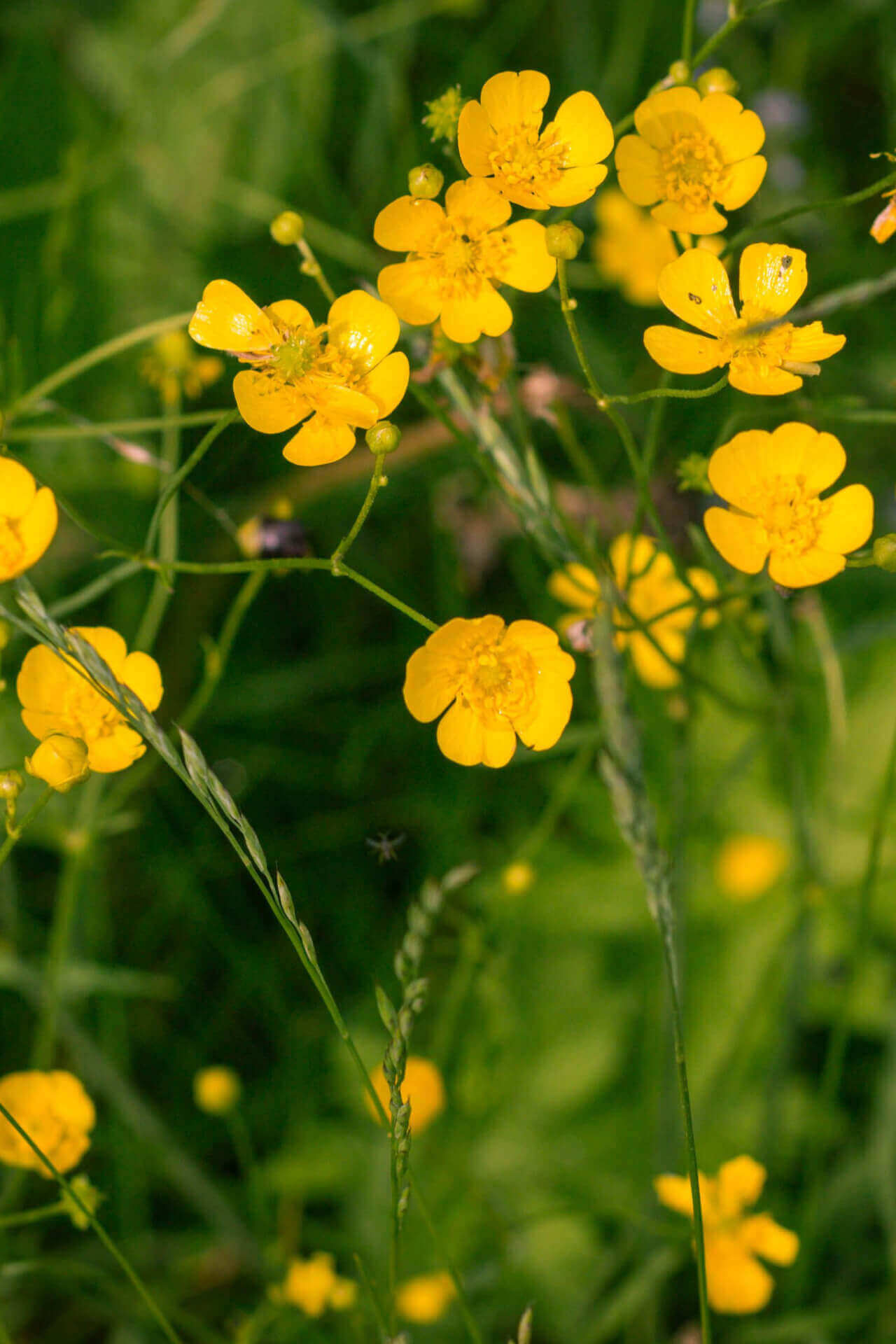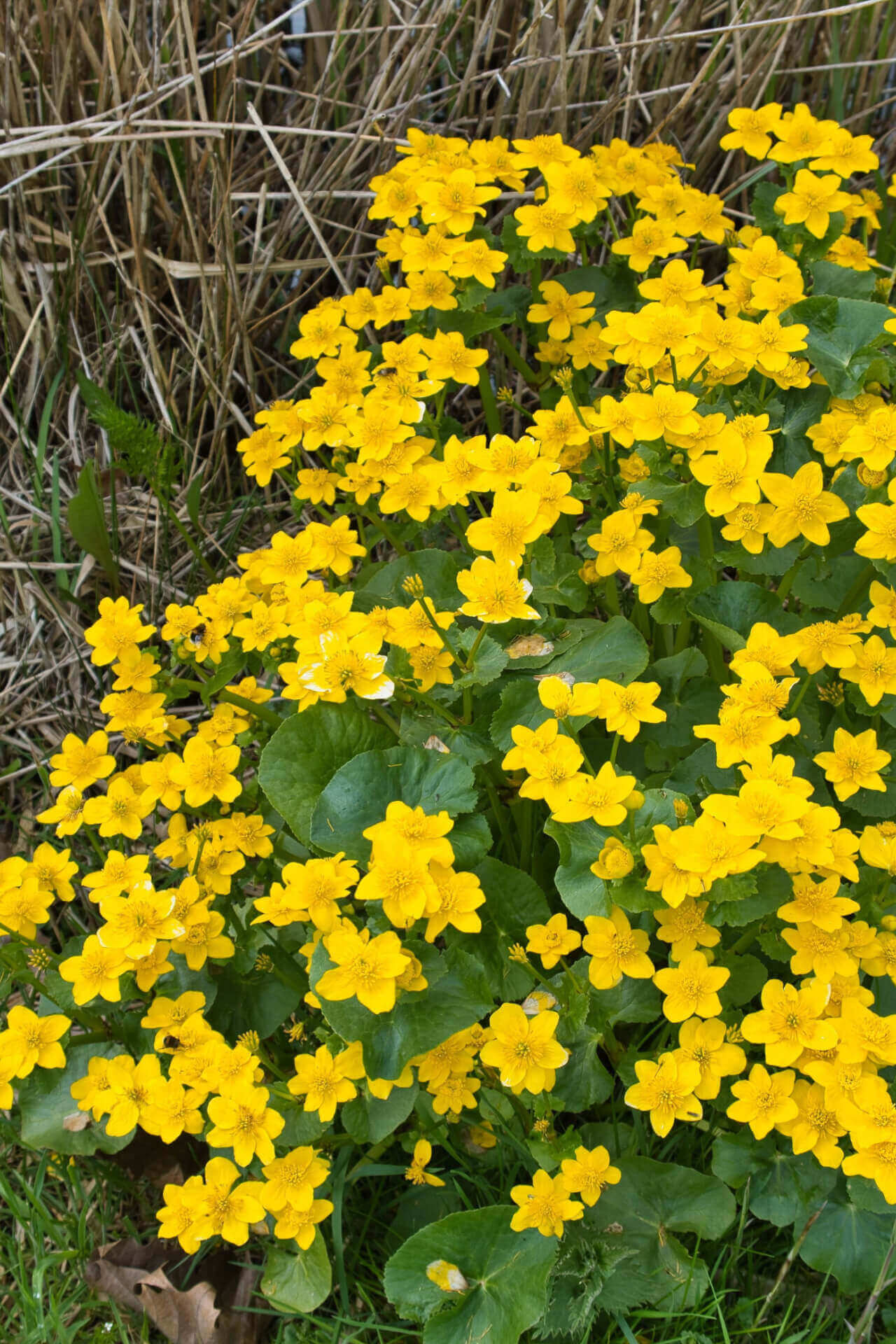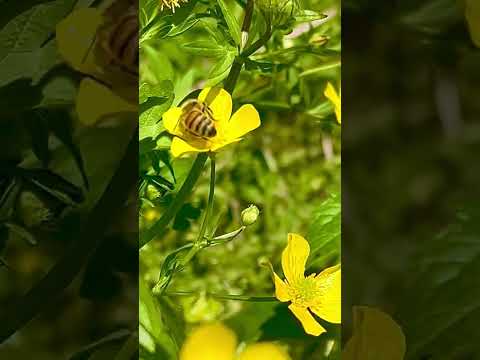Creeping Buttercup For Sale
The cheerful yellow flowers of the creeping buttercup make an eye-catching ground cover in any garden or lawn. This perennial plant is easy to set and forget–once it is established, it spreads rapidly to cover whole meadows with its golden glow, especially in wet climates where it thrives.
The yellow buds bloom in spring and summer, but as a perennial, this plant is winter hardy and will return in full force with warmer weather. Its many green leaves and clumps of golden flowers make it an exciting, if wild, addition to your garden.
Plant Details - Creeping Buttercup
Family: Ranunculaceae
Light Requirement: Full sun, Partial shade
Water Needs: Moderate
Height: 1-2 ft
Spread: Over 40 sq ft
Growth Rate: Rapid
Soil Preference: Damp, clay, soil
Bloom Time: Spring and Summer
Flower Color: Yellow
Wildlife Value: Attracts pollinators
Notable Characteristics - Creeping Buttercup
This charming plant is commonly classified as a weed in agriculture, but it can also be a wonderful ornamental plant that fills bare spots in your garden with vibrancy. The creeping buttercup's golden yellow petals are distinguished by their glossy finish, which helps attract pollinators.
Its hairy stem and leaves are deep green and resemble a heart shape. This plant thrives in damp, flooded areas, and especially likes wet, compacted soil, or clay soil. It even gets its plant family name from ‘rana’, meaning ‘little frog’, a nod to its somewhat amphibious habitat.
Landscape and Maintenance: Creeping Buttercup
The creeping buttercup flower is native to Europe, Asia, and North Africa, but made its way to North America primarily through the movement of hay. It is toxic to livestock, contributing to its position as an irritant to farmers.
As a Creeping Buttercup, it spreads far and quickly. Its low growth form makes it troublesome to remove in unwanted areas, but it provides much-needed resilience where it is planted intentionally. This cheerful, yellow plant grows swiftly to turn your garden into a lush field of sunshine.

Exposure
Creeping Buttercup (Ranunculus repens) thrives in partial to full shade. It prefers moist, shaded areas, such as under tree canopies or along shaded garden edges. While it can tolerate some sun, it performs best in low-light conditions.
Height at Maturity
Under 12"
Usage
Pollinator Plant
Shipped As
Bare-root
Ships
USPS
Planting Zones
3-9




